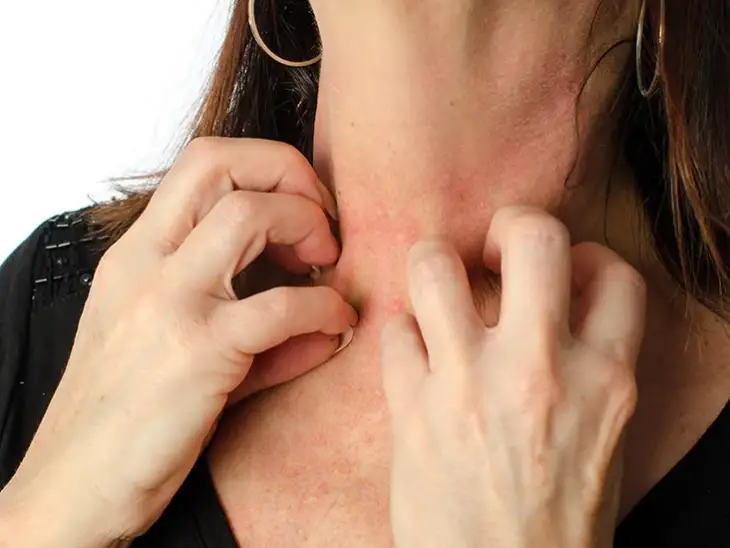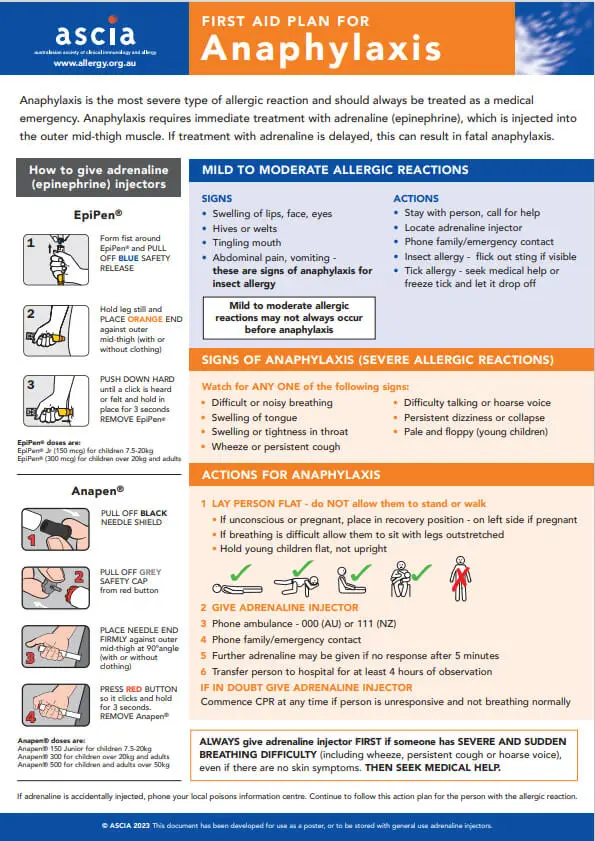Anaphylaxis is a severe and life-threatening allergic reaction that can occur within seconds or minutes of exposure to an allergen. The reaction can lead to breathing difficulties, low blood pressure, and shock. While anaphylaxis can occur at any time, there has been concern that it can happen during sleep, leading to the question: Can you die in sleep from anaphylaxis?
Understanding Anaphylaxis

Anaphylaxis is a severe allergic reaction that occurs when the body’s immune system overreacts to an allergen. Allergens can include food, medication, insect bites, and even exercise. The reaction can be mild or severe, and in some cases, life-threatening.
During anaphylaxis, the body releases a flood of chemicals, including histamine, that can cause a range of symptoms. The symptoms can occur within seconds or minutes of exposure to the allergen and can include:
- Skin reactions, such as hives, itching, and flushing
- Swelling of the face, lips, tongue, and throat
- Difficulty breathing or wheezing
- Rapid or weak pulse
- Low blood pressure
- Nausea, vomiting, or diarrhea
- Anxiety or confusion
- Loss of consciousness
Can I Die in Sleep from Anaphylaxis?
There have been cases of people dying in their sleep from anaphylaxis, although these cases are rare. It is more common for anaphylaxis to occur during waking hours when people are more likely to be exposed to allergens. However, anaphylaxis can occur during sleep, especially if the person has a severe allergy or has previously had an anaphylactic reaction.
If anaphylaxis occurs during sleep, the symptoms can go unnoticed, and the person may not wake up. This can lead to a delay in treatment, which can be dangerous or even fatal. It is important to note that anaphylaxis is a medical emergency that requires immediate treatment. Delayed treatment can result in respiratory or cardiac arrest.
Preventing Anaphylaxis
Anaphylaxis can be prevented by avoiding exposure to allergens. If you have a known allergy, it is important to take steps to avoid the allergen. This may include reading food labels, carrying an epinephrine auto-injector, and wearing medical identification.
If you have a history of anaphylaxis, it is important to work with your healthcare provider to develop an anaphylaxis action plan. This plan should include steps to take in the event of an anaphylactic reaction, including the use of an epinephrine auto-injector and when to seek emergency medical attention.
How to Manage Anaphylaxis?

Anaphylaxis is a severe and potentially life-threatening allergic reaction that requires immediate medical attention. If you or someone you know experiences symptoms of anaphylaxis, it is important to take action quickly to manage the reaction and seek emergency medical care. Here are some steps to take:
Recognize the Symptoms
The symptoms of anaphylaxis can vary, but they often include:
- Skin reactions, such as hives, itching, and flushing
- Swelling of the face, lips, tongue, and throat
- Difficulty breathing or wheezing
- Rapid or weak pulse
- Low blood pressure
- Nausea, vomiting, or diarrhea
- Anxiety or confusion
- Loss of consciousness
If you or someone else experiences these symptoms after exposure to a potential allergen, it is important to seek medical attention immediately.
Use an Epinephrine Auto-Injector
If you have been prescribed an epinephrine auto-injector, such as an EpiPen, it is important to use it as soon as possible after the onset of symptoms. The auto-injector delivers a dose of epinephrine, which can help to reverse the symptoms of anaphylaxis and buy time until emergency medical care arrives.
To use an epinephrine auto-injector:
- Remove the safety cap from the auto-injector.
- Hold the auto-injector in your dominant hand, with the tip pointing downwards.
- Use your other hand to hold the thigh firmly, with the auto-injector perpendicular to the thigh.
- Push the tip of the auto-injector firmly into the thigh, until you hear a click.
- Hold the auto-injector in place for several seconds, then remove it from the thigh.
After using an epinephrine auto-injector, it is important to seek emergency medical care immediately.
Call for Emergency Medical Care
Even if you have used an epinephrine auto-injector and are feeling better, it is important to seek emergency medical care immediately. Anaphylaxis can be unpredictable, and symptoms can reoccur or worsen over time. Emergency medical care can provide further treatment and monitoring to ensure that the reaction is fully managed.
Follow Up with Your Healthcare Provider
After an episode of anaphylaxis, it is important to follow up with your healthcare provider. They can provide further guidance on managing your allergies and preventing future episodes of anaphylaxis. They may also prescribe additional medications, such as antihistamines or steroids, to help manage the symptoms.
Conclusion
Anaphylaxis is a severe and potentially life-threatening allergic reaction that can occur at any time, including during sleep. While rare, anaphylaxis can occur during sleep, which can lead to delayed treatment and potentially fatal consequences. It is important to take steps to prevent anaphylaxis and to have an anaphylaxis action plan in place in case of an emergency.
You might also like
Disclaimer: Information on HealthIID.Com is for general purposes only. It’s not a substitute for professional medical advice. Consult your physician before making health decisions. The site is not liable for any consequences from reliance on the information provided.
